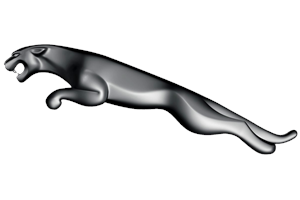


This edition of the Jaguar XK 120 SE FHC is the 4 speed / Manual version and was first brought out in 1948. This was at around the same time as the introduction of the 1948 Jaguar XK 120 Roadster and the 1948 Ferrari 166 MM.This particular Jaguar XK has a 3442cc Naturally Aspirated Petrol powerplant with 6 cylinders in a St formation.
The XK shares its Petrol St6 engine configuration with the likes of the 1965 Aston-Martin DB6 1965 and the . If you're looking for other fast cars which share the XK's Rear Wheel Drive, Coupe combination then how about the 1982 Fiat X1/9 1.5 8V or the 1965 Aston-Martin DB6 1965.
Weighing in at 1372 kgs (3024 lbs) this makes the Jaguar XK 120 SE FHC in the same weight category as the 2022 Koenigsegg CC850 4.9 V12 Twin Turbo or the give or take 50kg.
In terms of power the 3442cc 12V St6 engine produces 180 bhp (134 kW) @ 5300 rpm similar to the 2020 Abarth 695 70th Anniversario 1.4 Turbo (177 bhp) or the 2020 Audi A1 Sportback 40 TFSI S tronic S line (197 bhp).
The Naturally Aspirated St6 throws out 203 lb-ft (275.2 Nm) @ 4000 rpm placing it with cars of similar torque performance figures such as the 2020 Abarth 695 70th Anniversario 1.4 Turbo (184 lb-ft) or the 2020 Audi A1 A1 Sportback 35 TFSI S tronic S line (184 lb-ft).
If one combines the weight with power or torque performance for the Jaguar XK you can get a better idea of it's real world performance.
![Ford Fiesta ST 1.5 Turbo - [2018] image Ford Fiesta ST 1.5 Turbo - [2018] image](/editionimages/2035.jpg)
The 2018 Ford Fiesta ST 1.5 Turbo (156.1 bhp per ton) has similar Bhp Per Ton stats as the Jaguar XK.
The Jaguar XK has a Power to weight ratio of 131.1 bhp per ton and 147.9 lb-ft per ton. Bhp Per Ton figures of the 1948 XK competing with the 2018 Ford Fiesta ST 1.5 Turbo (156.1 bhp per ton) or the 2002 Toyota Corolla 1.8 VVTL-I T SPORT (156.1 bhp per ton).
If you agree with the late great Carroll Shelby then arguably an even better indicator of potential performance, Torque. Use weight as well and you end up with - Torque per ton, with the Jaguar XK generating around 147.9 lb-ft per ton. If you're curious as to what other cars have as much torque to weight then look no further than the 2009 Tesla Roadster Electric 248bhp (172.9 lb-ft per ton) or the 1953 Chevrolet Corvette C1 235 Convertible (172.8 lb-ft per ton).
With a 0-60mph time of 9.90 secs or a 0-100km/h (0-62mph) of 10.2 secs, this made the Jaguar XK 120 SE FHC as fast as the 2001 Citroen C5 2.2 HDi 16v (9.90 secs) the 1997 Citroen Saxo 1.6i VTR (9.90 secs) the 1980 Nissan Skyline Hardtop 2000 Turbo GT-E (9.90 secs) the or the 1979 Dodge Magnum GT 5.9L V8 (9.90 secs). This Jaguar XK 120 SE FHC is also faster than the 1980 Renault 18 1.6 Turbo (10.00 secs) the 1976 Triumph 2500 TC (10.00 secs) the 1966 Pontiac Tempest Le Mans Sprint (10.00 secs) the and the 1950 Ferrari 195 Inter (10.00 secs).
When talking about the performance of the Jaguar XK on the drag strip it can reach a quarter mile in an estimated 16.1 secs @ 85.0 mph. Similar performance down the quarter mile can be found with the the 2019 Tesla Model 3 Standard Range (16.03 secs), the 1999 Audi A3 S3 1.8T Quattro (16.04 secs), and the 2009 Ford Fiesta ST185 (16.06 secs).
Modern performance cars are often artificially restricted to 155mph. The 1948 version of the Jaguar XK 120 SE FHC has a maximum speed of 121mph.
If maxing out your car on the AutoBahn is your thing and you're wondering what's faster than the 1948 Jaguar XK 120 SE FHC then how about the 2012 Seat Ibiza 1.4 FR Turbo Supercharged (132 mph), the 2011 Fiat Punto Evo Abarth 1.4 Turbo (132 mph), or the 2011 Infiniti FX 30d 3.0 V6 Diesel (132 mph).










Lamborghini Diablo 6.0 V12
Engine: Naturally Aspirated Petrol | 5992cc 48v V12
Top Speed: 200 mph
0-60mph: 3.80 seconds

Volkswagen-VW Passat 1.8 20V Turbo
Engine: Turbo Petrol | 1781cc 16v St4
Top Speed: 222.0 kph
0-100kph: 9.0 seconds



















